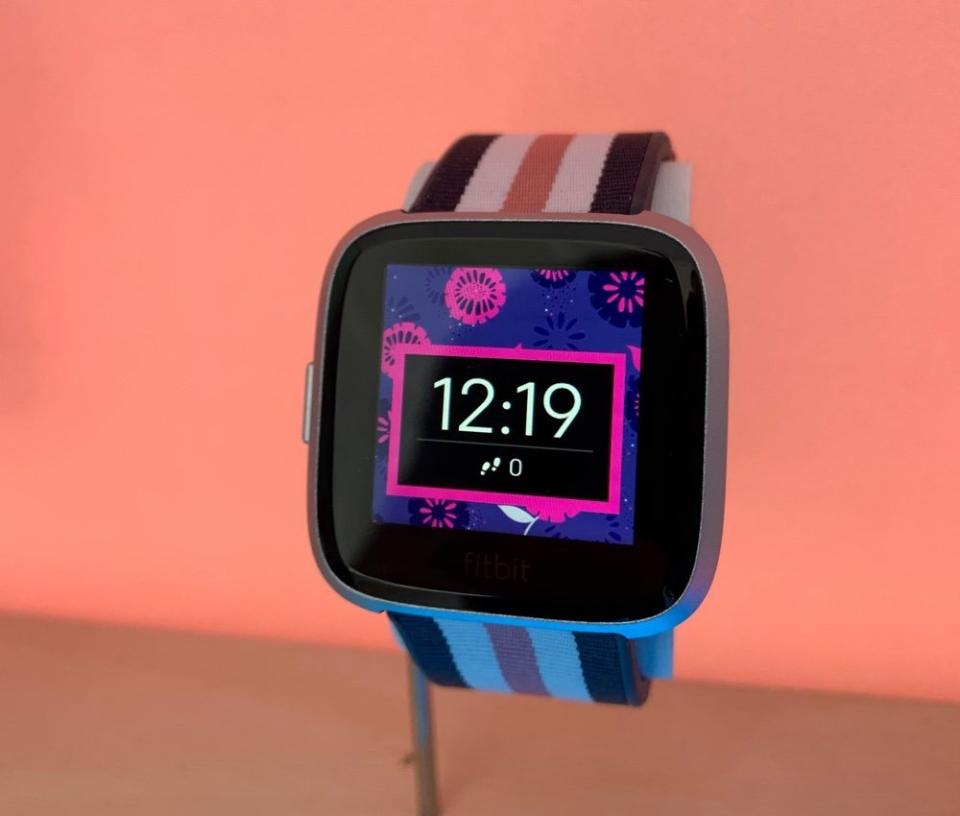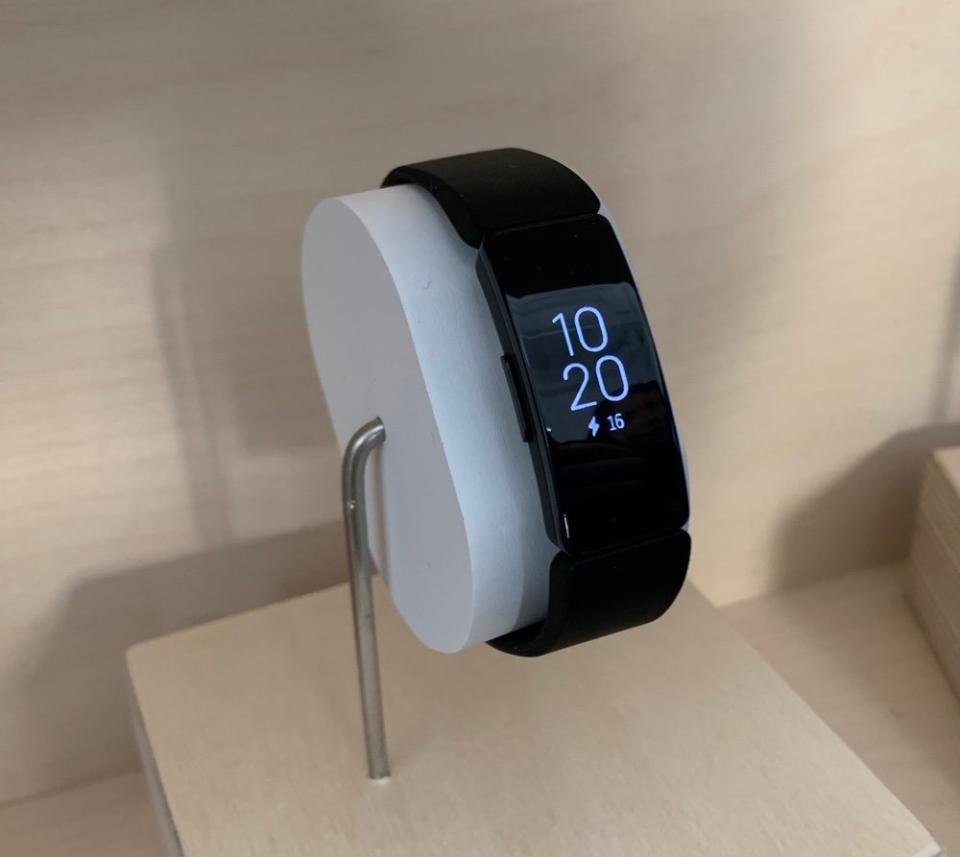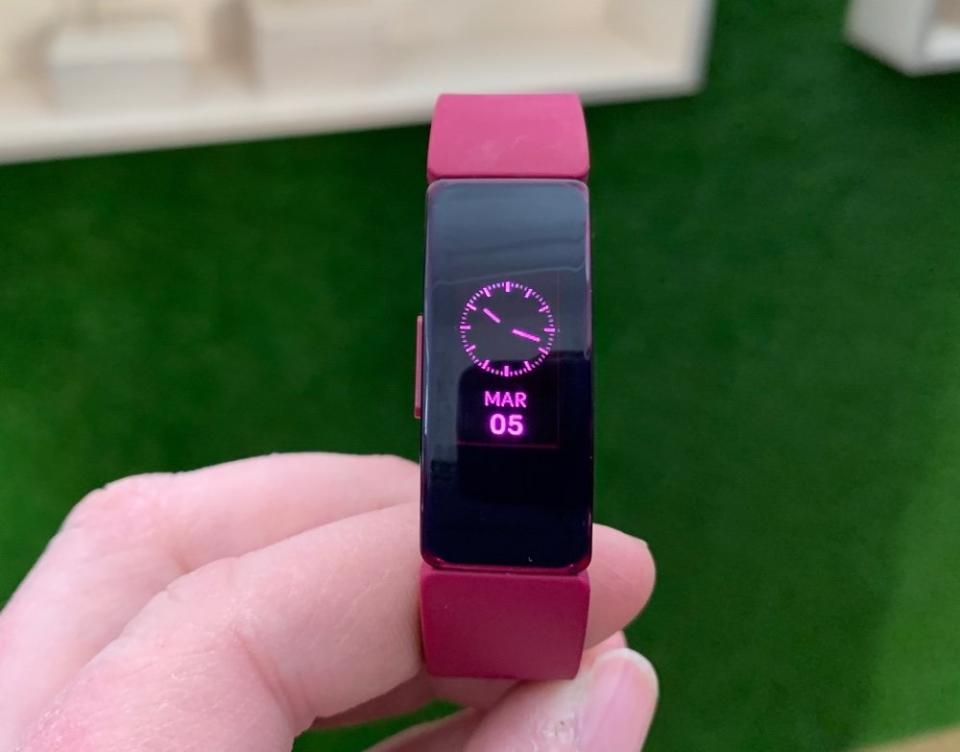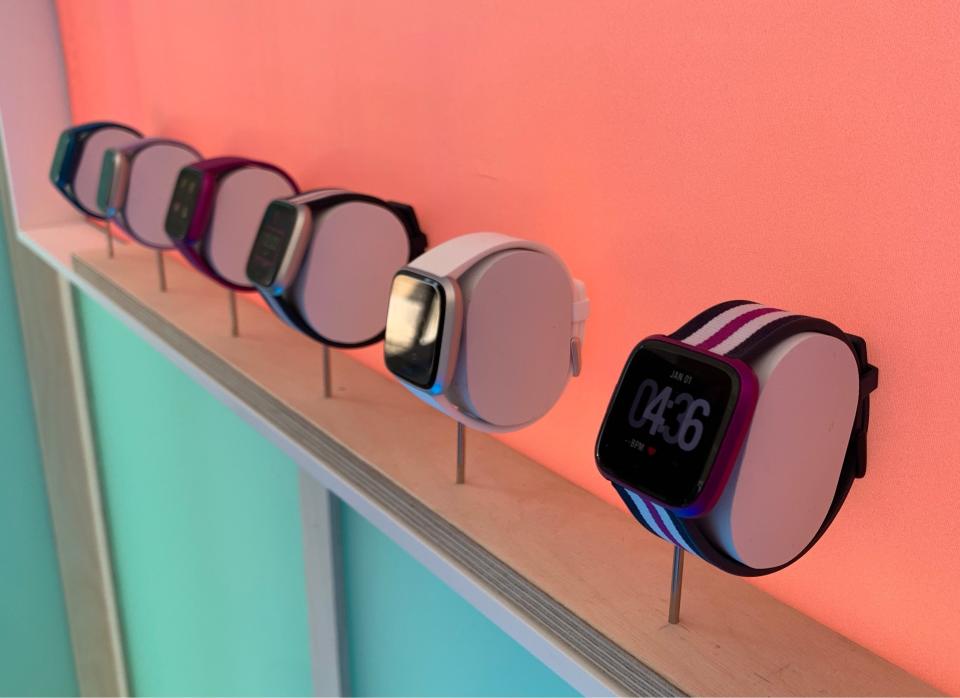Fitbit unveils 4 new wearables ahead of premium health service debut
Fitbit (FIT) on Wednesday announced four new fitness wearables: the Inspire and Inspire HR trackers, the Versa Lite Edition smartwatch, and the Ace 2 children's fitness tracker. Both the Inspire and Inspire HR were originally only available to Fitbit's Health Solutions partnership customers, but are now being rolled out to general consumers.
The $159 Versa Lite Edition, meanwhile, is a less expensive version of the company's existing Versa smartwatch (the standard Vera costs $199 while Versa Special Edition costs $229). The Lite Edition is targeted at consumers who are interested in smartwatches, but haven't made the leap due to price constraints. The Ace 2 is the follow-up to Fitbit's previous children's tracker, the Ace.
The new wearables are all part of Fitbit's strategy to turn around its business, which has seen its stock price tumble following its recent earnings announcement during which the company reported lower average selling prices per device sold and weak guidance.

The hope is that these new wearables will bring more users into Fitbit's services offerings before rolling out a premium health coaching service later this year.
Inspire and Inspire HR
The Inspire and Inspire HR, which will cost $69 and $99, respectively, are the exact devices you'd expect from Fitbit. They provide you with all-day step tracking, monitor your calories burned, and provide you with your active minutes. They also offer sleep tracking, automatic exercise detection, smartphone notifications, swim tracking, up to 5 days of battery life, and more.

The HR model, however, boasts a heart rate monitor, hence the HR monicker, and can give you a cardio fitness score, guided breathing sessions, and more in-depth sleep tracking. Those extras make the HR slightly thicker than the standard Inspire, but it's not enough to make it feel bulky.
In fact, the Inspire and Inspire HR are surprisingly small. When I used a demo unit at Fitbit's press event, I was surprised to see how thin and light they are. The company has come a long way in designing trackers that are functional without getting in the way.
Both units feature responsive touchscreen displays and a single button on their left sides to navigate you back to the home screen. The Inspire is available in black and a color Fitbit calls Sangria, but I'll call maroon. The company also chose to make the maroon version's touchscreen the same color as its band, which is a nice touch. The Inspire HR is available in black, white, and purple. Yes, the purple version's screen is also purple.
According to Fitbit CEO James Park, the Inspire and Inspire HR are meant to replace several other trackers in Fitbit's lineup.
"Over the past two years I've spoken publicly about trying to streamline our tracker lineup," Park told Yahoo Finance. "We used to have the Fitbit Zip, Fitbit One, Flex 2, Alta and Alta HR, so that's five trackers that we've consolidated down to two. Now we actually have three total trackers: Inspire, Inspire HR, and Charge 3."

Park said that by offering three trackers, the company will make it easier for consumers to distinguish between the trackers in its product line.
"The whole strategy there is by streamlining, we feel it can boost sales in the tracker lineup, because it will make things much easier for consumers to understand which product is right for them. So we have a good, better, best, with Inspire, Inspire HR and Charge 3," Park said.
Fitbit Vera Lite and Ace 2
Fitbit's new Versa Lite smartwatch is meant to serve as an entry point for first-time smartwatch shoppers and consumers looking for a low-cost device that still offers fitness tracking and app notification capabilities.
The lower price point means Fitbit will be able to reach a larger portion of the smartwatch market. Smartwatch sales for the company have been steadily increasing, which makes the addition of the Versa Lite even more important.
The main differences between the Versa Lite and Versa is that the Versa Lite won't be able to track floors climbed or laps swum, store music, offer on-screen workouts or let you make mobile payments. But outside of that, the Versa Lite provides the same long battery life, fitness and sleep tracking, app notifications, female health tracking, and clock faces as the standard Versa.

The Versa Special Edition is the only one of the three watches that includes Fitbit's mobile payments and includes two watch bands in the box.
The company's Ace 2 is an improved version of the original Ace. It is now available for children 6 and up rather than 8 and up like its predecessor. Park explained that's simply because the Ace 2 was designed specifically for children's smaller wrists, while the original Ace was more or less a modified version of the company's Fitbit Alta tracker.
Updates to the Ace 2 include water resistance up to 50 meters and smartphone notifications for older children. The company says that the Ace 2's straps can also be changed out as your child ages so they can choose from the adult line of bands when they hit their tweens.
Fitbit's turnaround
Fitbit reported positive results in its Q4 earnings, but it's not out of the woods yet. The company reported that it saw year-over-year device sales growth for the first time since 2016. And it's expecting further sales and revenue growth from its devices, as well as its burgeoning health solutions offering to reach $100 million in revenue 2019.
"A large part of the growth in our health solutions business is now being powered by Fitbit Care, which is all about software, and about both digital and human coaching," Park explained.
"And so what we're seeing resonate with healthcare partners, both employers and health plans, is actually, you know, it's now using the devices, but having that level of software and intelligence on top that allows them to help manage several chronic disease conditions whether it's diabetes, hypertension, etc."
Park said the company is continuing to push into the healthcare space, which has opened up a secondary revenue stream for Fitbit.
"We're really leaning into that. It's not only on the healthcare side, but on the consumer side. Our whole strategy there is to increase our number of active users, and then roll out a paid premium offering in the second half of this year," he said.
The best way to get more active users? Offer less expensive devices like the Inspire, Versa Lite, and Ace 2.
But Fitbit also issued weaker guidance for Q1 2019 during its earnings report, saying that it will have greater losses than analysts expected and that its average selling price for units will fall.
But if the drop in ASP can be made up in the upcoming premium service offering, Fitbit might be poised for a greater turnaround.
More from Dan:
Apple’s Siri partners with new apps to take on Alexa and Google Assistant
Netflix subscriber survey reveals an opportunity for price hikes
How much you’ll pay for major streaming services if you ditch cable
Samsung’s $1,980 smartphone will test the limits of what consumers will pay
Email Daniel Howley at dhowley@oath.com; follow him on Twitter at @DanielHowley. Follow Yahoo Finance on Facebook, Twitter, Instagram, and LinkedIn.finance.yahoo.com/

